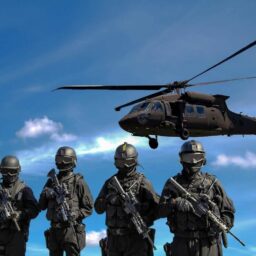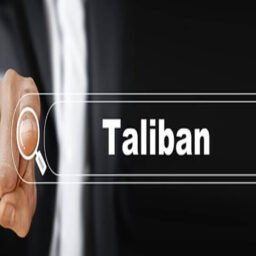INTRODUCTION
Aircraft leasing is a very common transaction. Financial institutions lease aircraft to carrier companies; flight schools rent aircrafts to fliers who require them for weekends; part-ownership programs get into several dry leases in which program participants lease aircrafts to each other, etc. There may be several reasons to why an aircraft operator would lease airplanes. The airline may be looking to expand its fleet but may not have the kind of money needed to buy a plane on the onset; the airline might need the planes on an urgent basis when its own fleet is grounded due to some reason, and buying a plane may take years, while leasing can be done within months.
Aircraft leases
Wet Lease– When an airline wet leases an aircraft, the leasing company provides everything that is required for the functioning of that aircraft – the airplane itself, the pilots as well as cabin crew. The maintenance and insurance of this aircraft is taken care of by the leasing company itself. Such type of service is known as ACMI Service (Aircraft, Crew, Maintenance, and Insurance).
- Dry Lease– This is a lease where only the aircraft is provided to the airline and it uses its own set of crew and maintenance personnel.
- Damp Lease– This is a combination of wet and dry leases. The leasing company may help out with whatever the airline requires with the airplane, such as it may provide maintenance personnel and insurance with the aircraft but the airline can use its own crew if available. Damp leases therefore can have different terms, depending on what the lessee airline requires.
While such leasing may be a beneficial activity to several parties, the question of liability of the owner or lessor is to be decided in all such cases. The following discussion is an amalgamation of the development and status of this question as well as my observations based on them.
There have been several international Conventions and Treaties over the years that seek to govern the aviation industry. The Convention on Damage Caused by Foreign Aircraft to Third Parties on the Surface, popularly known as the Rome Convention 1952, states that “the operator shall be liable for damage to any persons on the surface upon proof that the damage was caused by an aircraft in flight or by any person or thing falling therefrom”. Article 2(3)[1] of said Convention states- “the registered owner of the aircraft shall be presumed to be the operator and shall be liable as the same unless, while their liability is to be determined, they prove that some other person was the operator and take appropriate steps to add that other person as party in the proceedings.”
Article 9 of the 1952 Convention states- “Neither the operator, the owner nor their respective servants or agents, shall be liable for damage on the surface caused by an aircraft in flight or any person or thing falling therefrom otherwise than as expressly provided in this Convention. This rule shall not apply to any such persons who commit a deliberate act or omission intended to cause damage.”
The idea of holding the operator liable and assuming the owner to be the operator unless established otherwise can be seen in various national laws as well, many of which initially hold the owner liable for damage and then give a proviso that if the aircraft has been leased to an operator other than the owner itself, then liability shall be decided by applying the same provision to the operators.[2]
The Warsaw Convention and the Montreal Convention are other two important conventions in the aviation industry that discuss the liabilities of parties involved. In neither of them has the liability of the lessor or manufacturer or financier has been specifically been discussed.[3] Article 29 of the Warsaw Convention[4] refers to “any action for damages, however founded” leaving the scope broad, as to what actions and what players can come under its ambit. It also leaves unanswered the question of whether this liability extends to lessors or financiers or not. The same is still left without an answer after the Montreal Convention of 1999.
It is conceded that Article 24(1) and 24(2) of the Warsaw Convention do imply that actions under Articles 17, 18, and 19 can be brought subject to the provisions of the Convention, and these 3 articles begin with “The carrier is liable…” and this would, in a very narrow reading, imply that the lessors and the like may not be covered under them. However, this fails to clarify the possibility, or lack thereof, of actions outside of the apparent ambit of the Warsaw Convention against other parties, such as manufacturers, financiers, and lessors.
Therefore, it can be seen that while the aviation industry has witnessed so many conventions in the previous decades, the question regarding the liability of lessors, financiers, etc, is surprisingly still not properly answered, and is still left to different interpretations and conclusions in different jurisdictions.
The liability of an aircraft lessor or financier as of now generally depends on the laws of liability followed by the countries involved.
For instance, in the US, earlier the lessor, operator, or financier shall be liable for the damage caused on land or water and to the third party only where the aircraft was completely in possession or control of the lessor or owner. Moreover, this applies only when the damage is caused due to the aircraft, engine, or propeller, including the flight of or any object falling from them to the ground.[5]
Although this provision limits the liability of aircraft owners and lessors who do not have possession, some U.S. courts while using this provision concluded that out-of-possession aircraft lessors and owners without any control on operations of the airplane could still potentially be made liable under tort law for damages caused by the airplane and that the state laws that hold so are not pre-empted by this federal law.[6]
Based on this provision, the Florida Supreme Court[7] observed that the limitation of liability as elaborated in 49 U.S.C. § 44112 “applies only to death, injury, or damage that people or property physically on the ground or in the water suffer. Moreover, this limitation on liability would apply only to persons and property present underneath the airplane during its flight, take-off, or landing.” Using this provision in the original form, the court observed in that case that this federal provision would not apply to the respondent airplane owner/lessor when the deceased was not ‘on land or water’ but was on the airplane itself at the time of the crash.[8]
Eventually, Section 514 of the Federal Aviation Administration Reauthorization Act of 2018 removed the phrase “on land or water” from Section 44112. In addition to this, Section 514 of the 2018 Act clarified that “control” implies “operational control”, which is defined in the Federal Aviation Regulations of the US and has a narrower application. Section 1[9] defines “operational control” for any flight as “the exercise of authority over initiating, conducting, or terminating a flight.” This modification has reduced the scope of holding lessors/owners liable in every aspect by establishing that an aircraft owner or lessor is liable for an accident only when there is sufficient evidence to prove that the owner or lessor exercised direct authority over the flight.[10]
By doing so, Legislature essentially has allowed lessors or owners to argue that they may not be held liable for damages caused by aircraft which was not in their possession or control. This is in line with the principle established by the Rome Convention of 1952.
CONCLUSION
In the present scenario, in case a lessee-pilot is negligent, the holding of lessors as liable for it concretely can be done only on the basis of deep pocket theory, i.e. the leasing company is in a far better position to pay the compensation than the pilot. However, such imputations cannot be justified in all cases. Adequate compensation can be provided to plaintiffs by relieving the loss through the insurance of the aircraft purchased by the owner who is assumed to be in the best financial capacity to take the impact of the loss from the airplane accident. The lack of uniformity about the situation of the owner/lessor’s liability compels the owner/lessor to estimate his risk at the highest it can be and to insure at very unsuitable rates. The effect of weather conditions on the flight of an airplane greatly increases the risk to the owner as well as the uncertainty of liability he faces. Lack of uniformity among the legislations of states and nations leads to varied and possibly contradictory results in aviation litigation, even where the facts of cases are similar.
Therefore, taking into consideration all the previous conventions and their lacunae, the judicial precedents in different countries, a consolidated set of rules should be mutually decided by the different States that would bring uniformity to this aspect of international aviation law and would answer the glaring question about the scenarios where a lessor or financier may be held liable and the extent to which liability may be shared, if at all, between these and the carrier airlines.
Author(s) Name: Prashansa Singh (Dr. Ram Manohar Lohiya National Law University, Lucknow)
References:
[1] Convention on Damage caused by Foreign Aircraft to Third Parties on the Surface 1952, art 2(3), 1952.
[2] New Zealand Civil Aviation Act 1990, § 97(7); United Kingdom Civil Aviation Act 1982, §64; Australian Damage by Aircraft Act 1999, §10(a).
[3] Ann T Hollyday, ‘Aviation Law: Owner-Lessor Liability–The Need for Uniformity’, 36
Me L Rev 93 (1984).
[4] International Civil Aviation Organization (ICAO), Convention for the Unification of certain Rules relating to International Carriage by Air (Warsaw Convention) (as amended at The Hague, 1955, and by Protocol No. 4 of Montreal, 1975).
[5] United States Code §44112, 49 USC 44112
[6] In re Lawrence W Inlow 2001 US Dist 921; Matei v Cessna Aircraft 1990 US Dist Lexis 3611 ND Ilinois (1990); Retzler v Pratt and Whitney 309 II App3d 906, 723 NE2d 345 (II L App 1999)
[7] Vreeland v Ferrer 71 So 3d 70 (Fla 2011)
[8] R Brent Cooper, ‘Lessor Liability in Aircraft Rental’, 42 J Air L & Com 447 (1976)
[9] Federal Aviation Regulations §1, 14 CFR §1
[10] Patricia Lamberty, ‘Torts – Nebraska Aeronautical Law: Liability of Aircraft Owner-Lessor to Injured Third Parties’, 11 Creighton L Rev 352 (1977)









